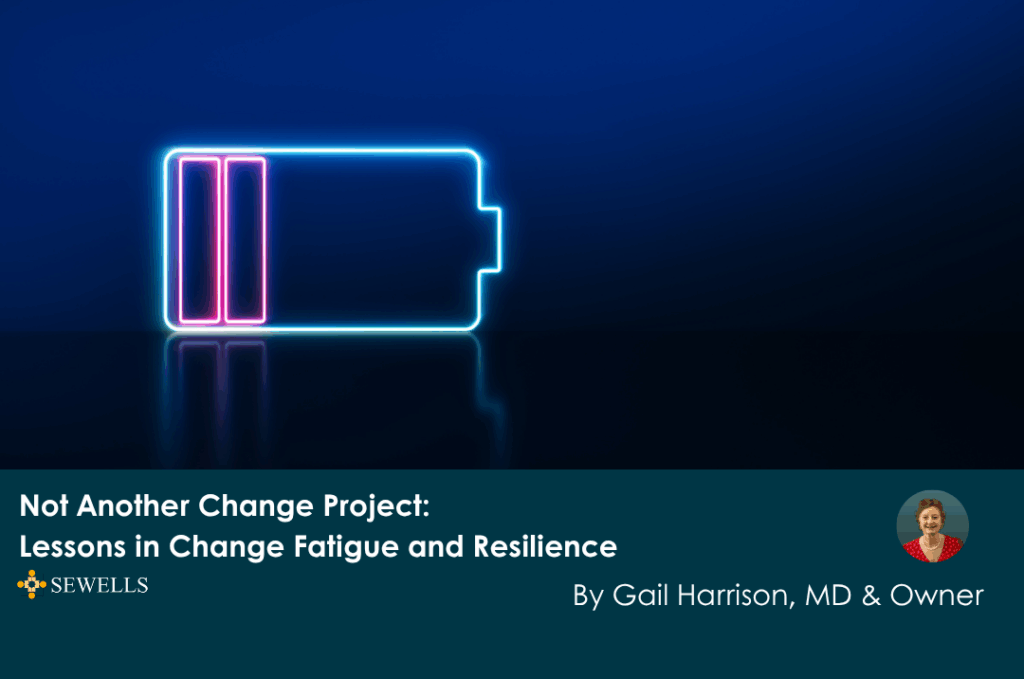I still remember the moment my boss told me we’d be picking up a new project to review processes across our whole department. At the time, I was working in Training for a UK-based global airline, in a small team already juggling the fallout from a recent reorganisation, multiple overlapping initiatives, and a heavy day-to-day workload.
I pushed back. “Really? Another project?” It felt like just one more thing that would run for a couple of months, soak up time and energy, and then quietly disappear, like so many others before it. We were up to our eyes already. I really couldn’t see why this mattered right now or how this would stick.
But I liked and respected my boss. She listened to my concerns, really listened and empathised…and didn’t let me off the hook. “I’ve committed to delivering this,” she said. “And I need the support of this team to see it through.”
So, I knuckled down. I got involved, helped deliver it, and learned some valuable lessons along the way, which have stuck with me far longer than the project itself.
This experience brought home some of the very real challenges of delivering change in any organisation, particularly when people are already stretched. It also offered insights that feel just as relevant now as they did at the time.
-
Change Fatigue is Real
It’s easy to underestimate just how much change people are being asked to absorb. While each individual project might seem manageable, the cumulative effect can be overwhelming. A reorganisation here, a new process there, a fresh initiative that sounds exciting in theory but just feels like more work in practice.
Eventually, people become weary. They switch off. Even positive change can start to feel like a burden when it comes on the heels of too much, too fast. And when previous initiatives have fizzled out and disappeared without trace, it’s natural to become cynical, to question whether this one will be any different.
That’s where I was. I wasn’t against the idea of improving processes, I just couldn’t see how it would last, or how we’d realistically sustain the effort when we were already over-loaded.
-
Good Leaders Listen…But Still Lead
One thing I’ll always appreciate about my boss was how she handled that moment. She didn’t dismiss my concerns or try to brush them aside. She acknowledged that the timing wasn’t ideal, that we were stretched, that I wasn’t alone in feeling the way I did.
But she also didn’t back down. She reminded me, clearly and firmly, that we had a role to play, and a commitment to honour. That blend of empathy and direction really mattered. It helped me feel heard but also helped me refocus on what needed to be done.
In times of change fatigue, that’s often what makes the difference. People don’t necessarily need fewer changes, but they do need a sense that their leaders understand what they’re up against, and that their efforts will count for something.
-
Sustainability Beats Hype
Looking back, my biggest concern wasn’t really the project itself, it was the fear that it would be just another short-term push with no staying power. That’s one of the challenges of working in environments with frequent change: people start to question whether anything will really stick.
Change initiatives often get a lot of energy at the start, launch events, messaging, early enthusiasm, but the real test comes later. Sustaining change requires more than a good launch. It needs clear ownership, visible progress, and early wins that show the effort is worth it.
When people see that a change is being taken seriously, that it’s not going away quietly, they’re far more likely to engage. But when it looks like just another flash in the pan, resistance and disengagement are almost inevitable.
-
Resilience is Built in the Doing
That experience also stretched me personally. I had to find a way to deliver, even though I didn’t feel fully onboard at the start. I had to balance competing priorities, push through frustration, and remind myself why the work mattered, even if it wasn’t my first choice in the moment.
And through that, I learned that resilience isn’t just about putting on a brave face or being endlessly positive. It’s about staying engaged, even when you’d rather opt out. It’s about acknowledging how you feel, and still showing up.
Resilience, in other words, is a muscle. And like any muscle, it grows when it’s tested.
Final Thoughts
Change isn’t going anywhere, but neither is change fatigue. As leaders, colleagues, and human beings, we need to stay tuned in to the emotional load that comes with ongoing transformation. We need to be honest about the toll it can take, not just focus on the size of the prize.
And perhaps most importantly, we need to ask:
What will help this change stick?
How will we support people through it, not just announce it?
And, how do we build the kind of resilience, individually and collectively, that allows us to deliver, even when we’re tired of change itself?
Those are the questions I keep returning to. Because while that project may be long gone, the lessons have stayed with me, and they’ve shaped how I think about supporting both individuals and organisations through inevitable change.
If you’re grappling with change fatigue in your own organisation, or looking for practical strategies to build resilience in your team, I’d love to explore these themes further with you. Join me for our upcoming webinar, ‘From Burnout to Buy-in: Managing Change Fatigue and Building Resilience,’ where we’ll explore actionable approaches for sustaining engagement when change feels overwhelming.

